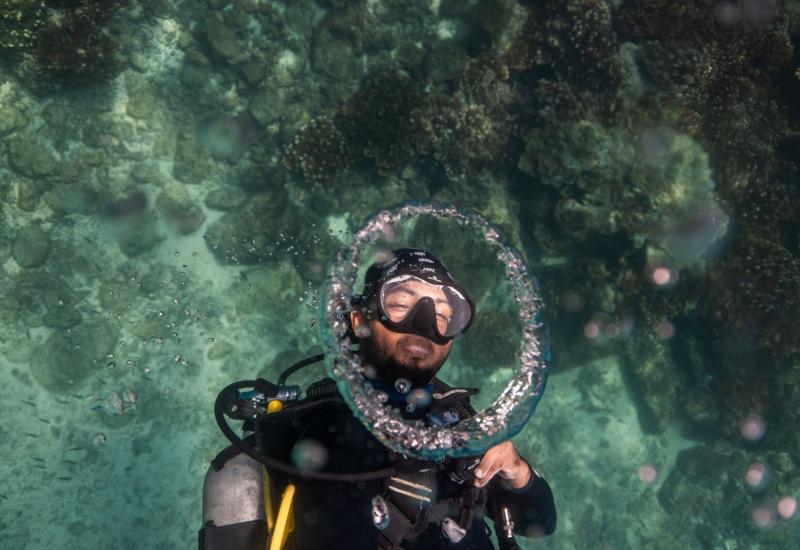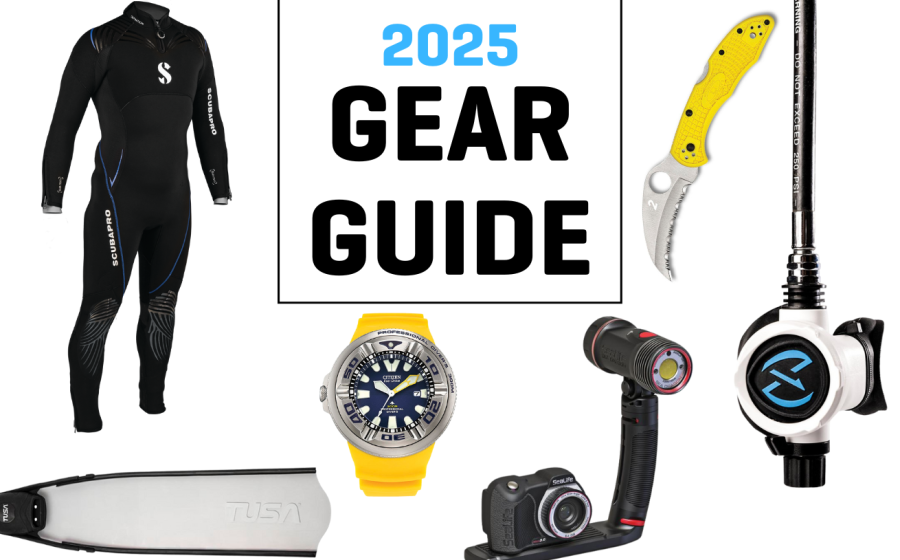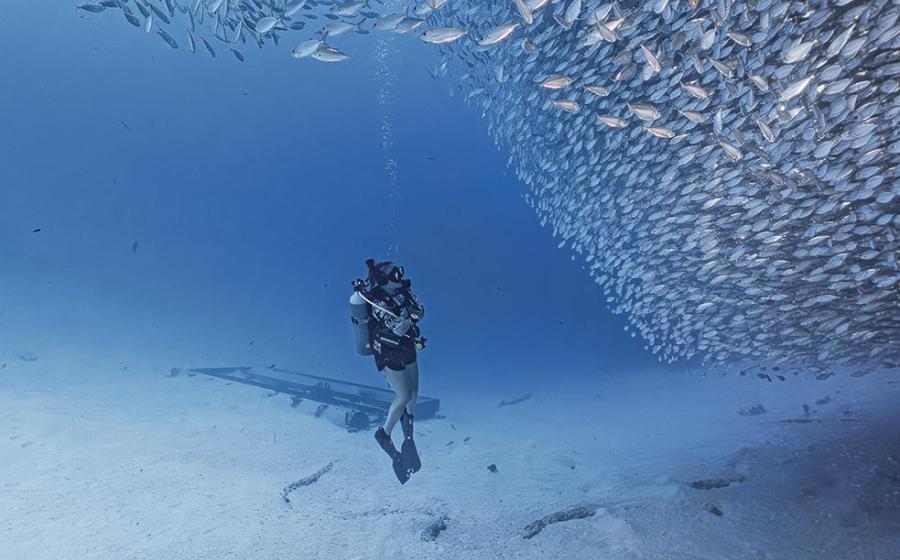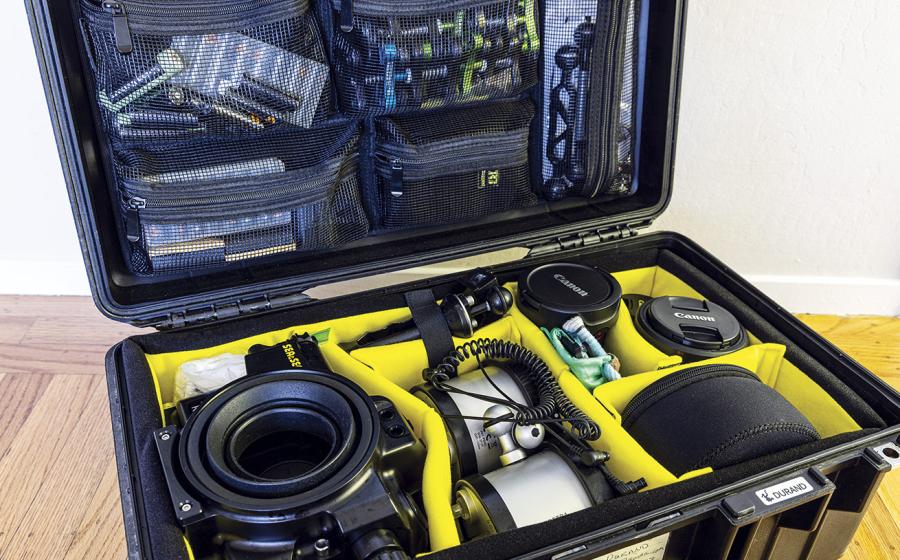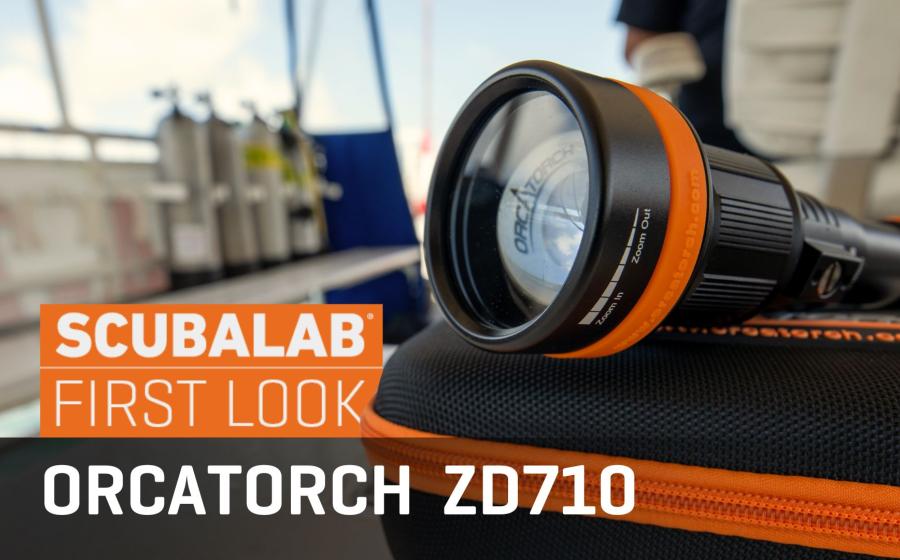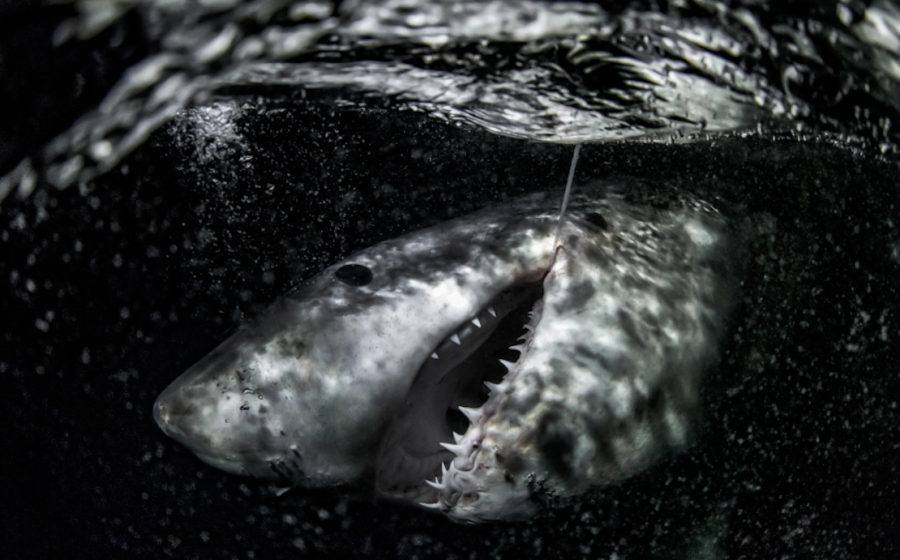12 Epic World War II Shipwrecks Scuba Divers Can Explore
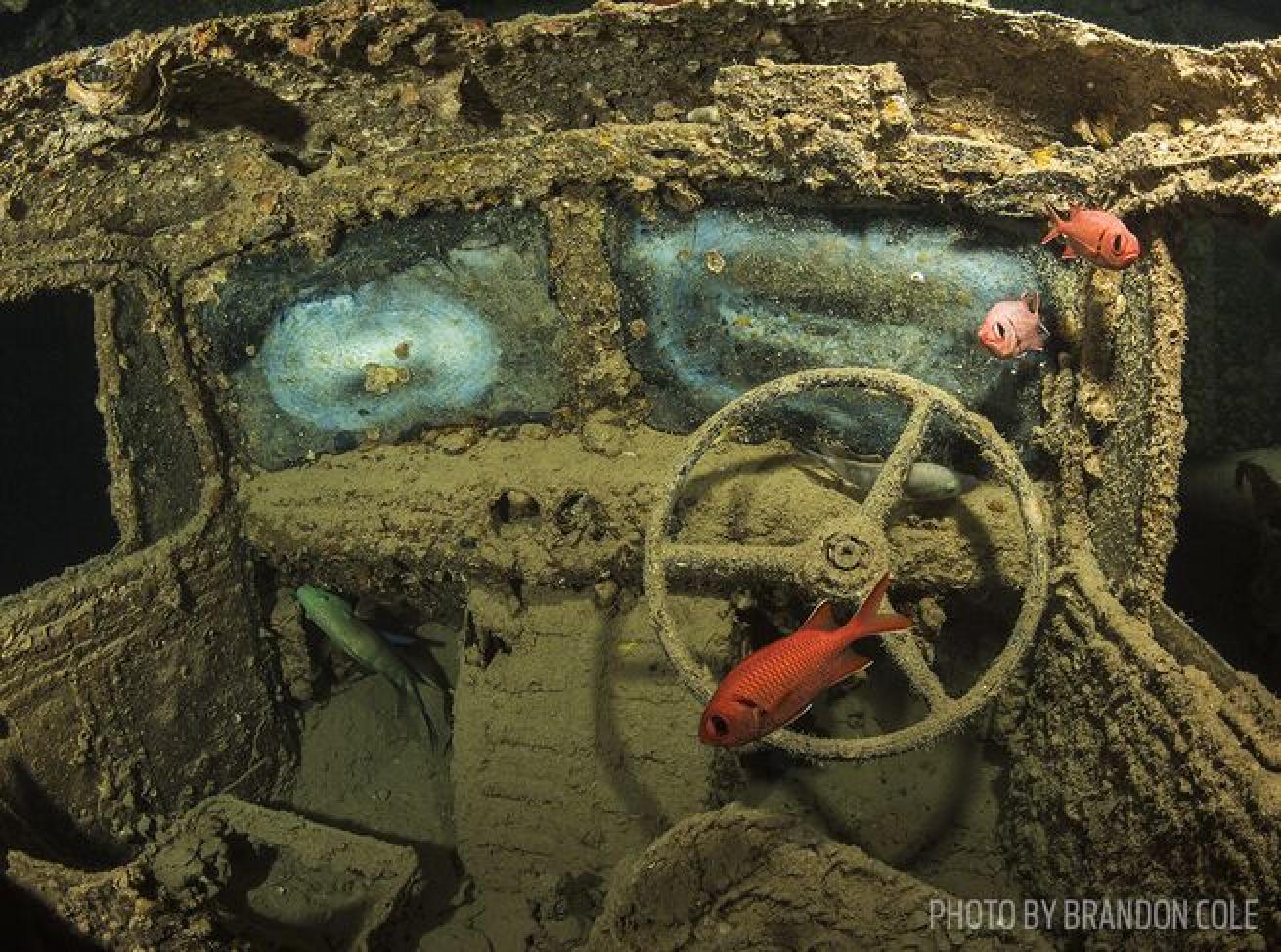
Brandon ColeThe Thistlegorm is still packed with cargo in the Red Sea.
World War II was a conflict of almost unfathomable size and scale. Among its many theaters of war were vast swaths of ocean in the South Pacific, the North Atlantic, and the shipping lanes of Asia and Africa, where countless ships and people met their fates at the bottom of the sea. Now, more than 70 years later, many of these wrecks have become revered dive sites for scuba divers looking to explore these incredible remnants of history. We’ve gathered the most compelling WWII wreck dives from around the world, from the undersea graveyard of Chuuk Lagoon to a hauntingly intact Nazi cargo ship mysteriously lost in the fjords of Norway.
Related Reading: Best Sites to Wreck Dive in Patagonia, Argentina
+ USAT LIBERTY / BALI
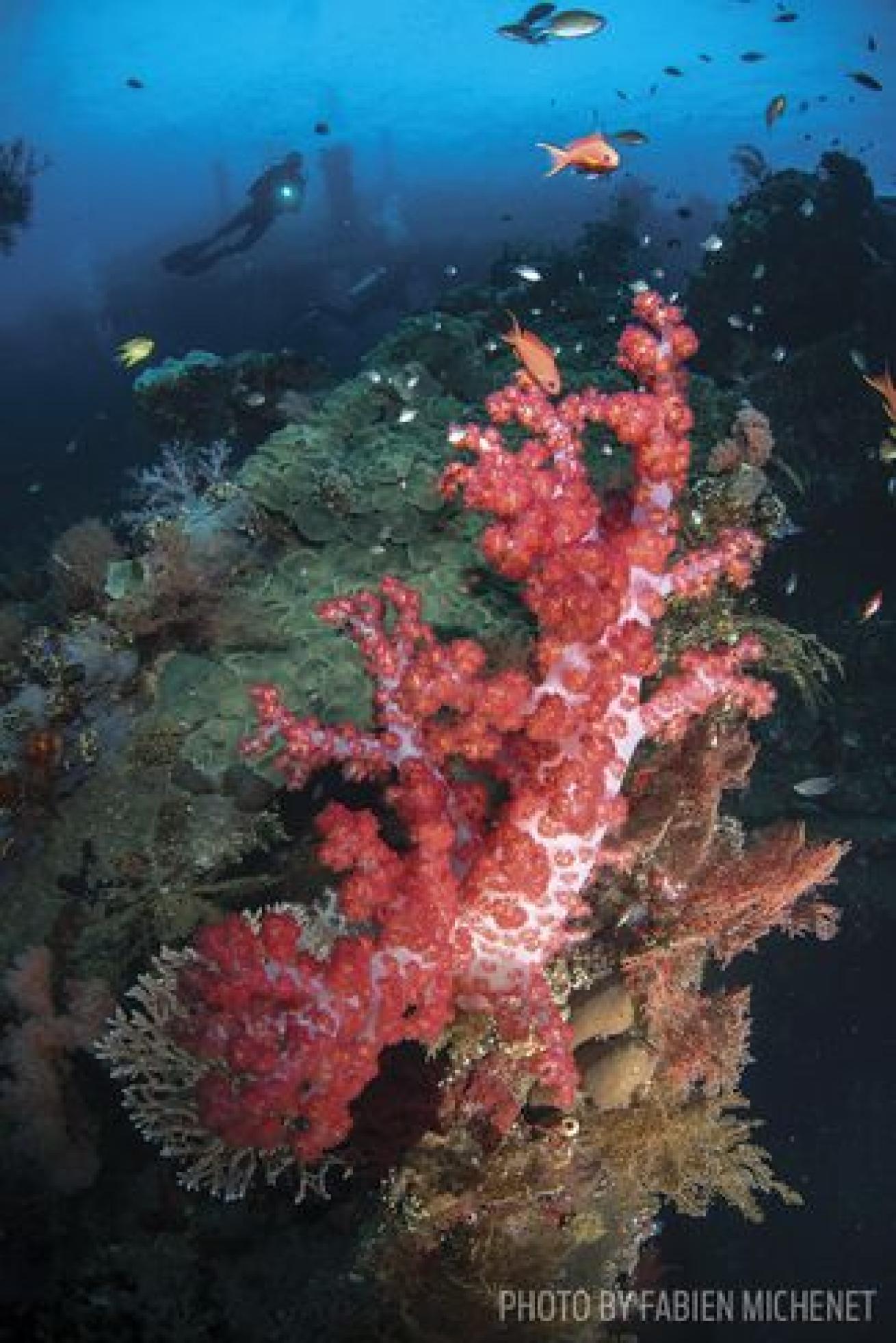
Fabien MichenetThe USAT Liberty in Bali
One of the most accessible and popular dive sites on the Indonesian island of Bali is the U.S. cargo ship Liberty, which was torpedoed by a Japanese submarine in 1942 and beached around Tulamben. “It stayed on the beach for about 20 years,” says Birger Finaut, co-owner of Bali Reef Divers Tulamben and Amed. “In 1963 there was a big volcanic eruption from Mount Agung, and the tremors pushed the Liberty into the sea, where it fell on its side and broke into three pieces.” The Liberty was stripped during the two decades it sat on the beach, so the superstructure is all that remains. “You can swim through some chambers, but it’s all pretty open,” says Finaut. “The steering wheel can still be found, but the wreck is mostly about the life that’s on it. It’s completely overgrown with coral, and has excellent macro creatures like frogfish, pygmy seahorses and ghost pipefish.”
NEED TO KNOW
Type: U.S. Army cargo ship
Depth: 15-90 feet
Length: 411 feet
Dive Conditions: Visibility can range from 15 to 100 feet; water temperature in the mid-70s
When to Go: Year-round, but December to March is rainy season
Fast Fact: The Liberty was tasked with transporting animals in WWI, among other duties.
+ SS THISTLEGORM / RED SEA
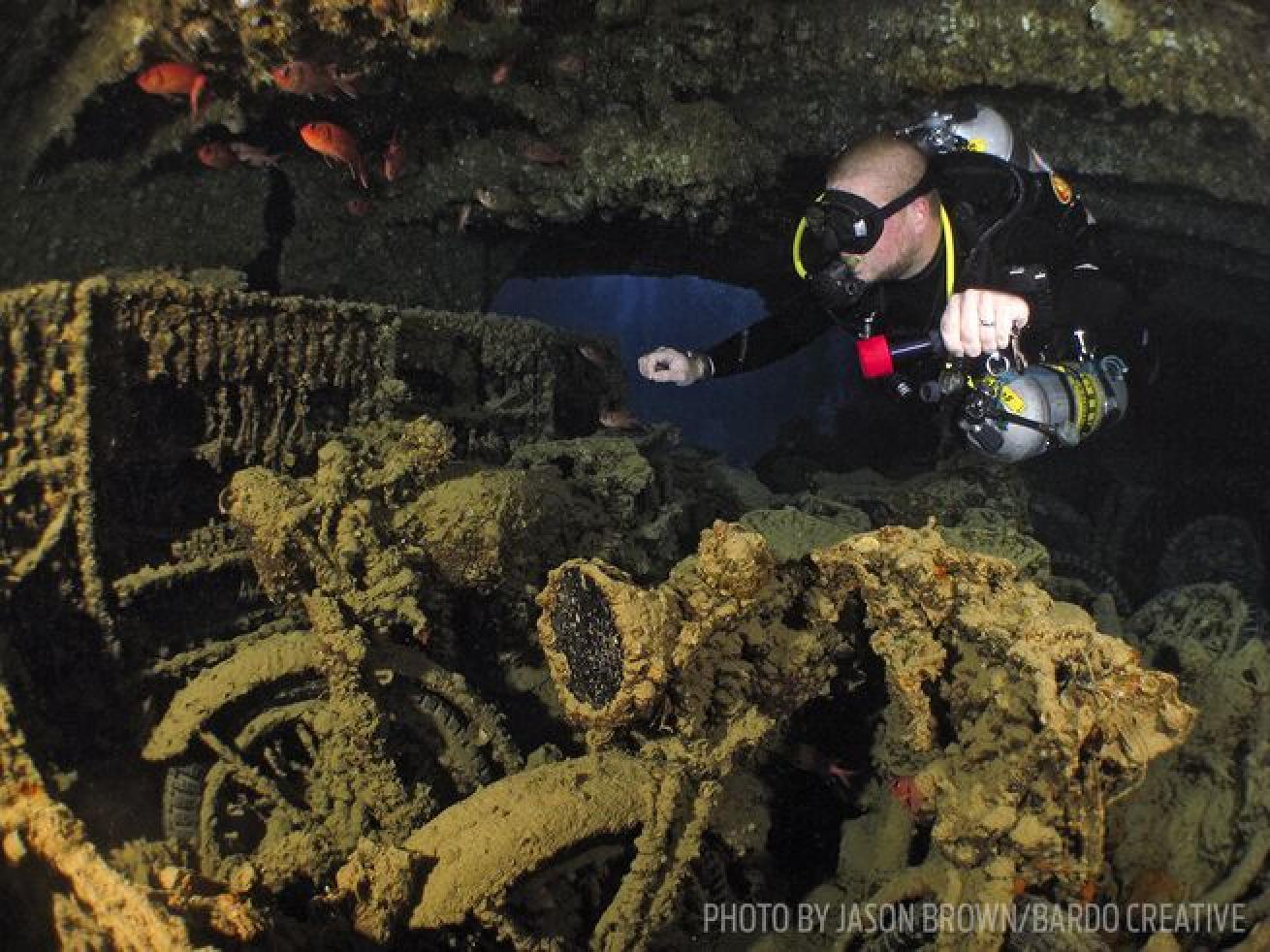
Jason Brown/Bardo CreativeA diver explores the SS Thistlegorm
The SS* Thistlegorm*, off the southern tip of the Sinai Peninsula in Egypt’s Red Sea, is quite possibly the most dived WWII shipwreck in the world, and for good reason. This British supply ship is a like a time capsule, still packed with a full load of cargo. “The vast WWII cargo collection is in very good condition with fine examples of motorbikes, rifles, aircraft parts, trucks, cars and Wellington boots,” says John Kean, author of the book SS Thistlegorm — World War Two’s Greatest Shipwreck. “Thistlegorm is a very open wreck with loading holds that have no ceiling, so you’re only a few feet from a direct ascent at any time. The best place to start is by the prop shaft, where the bomb damage is, where you enter at hold three and work your way to hold one by the bow.” The wreck gained fame in the dive world courtesy of Jacques Yves-Cousteau, who used knowledge from local fishermen to find the Thistlegorm’s location in the 1950s.
NEED TO KNOW
Type of ship: British armed freighter
Depth: 95 feet
Length: 419 feet
Dive conditions: Visibility of 100 feet or more; water temperature ranges from the mid-80s to low 70s
When to Go: Year-round
Fast Fact: Rec divers did not explore the ship until the early ’90s, when it was rediscovered after a period of anonymity.
+ JAKE SEAPLANE / PALAU
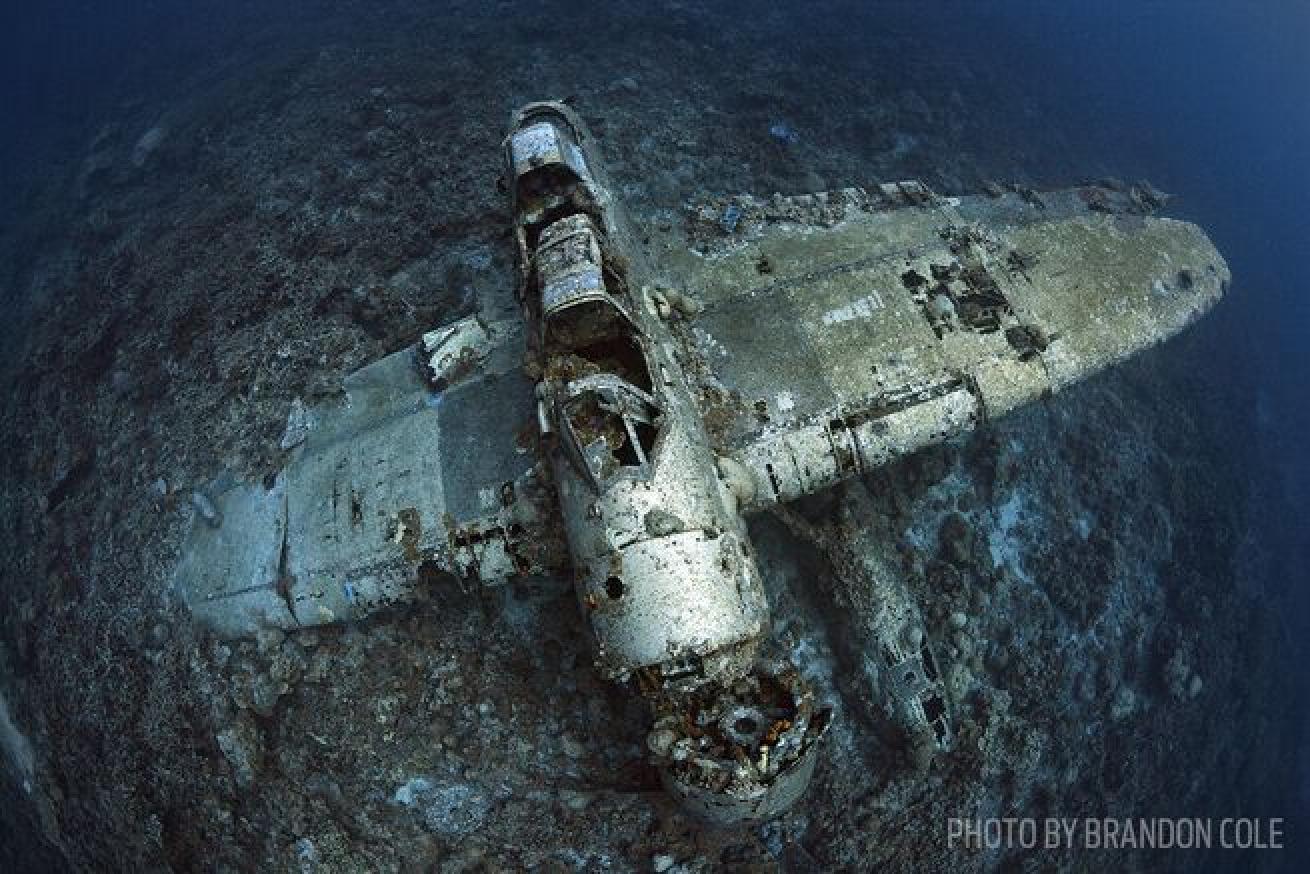
Brandon ColeThe Jake Seaplane in Palau
During the war, the Japanese maintained a seaplane base in Koror — and its Aichi E13A-1 seaplanes, code-named “Jake” by the Allies, were used for reconnaissance to spot Allied ships. The wreck of one particular Jake plane sits at a shallow 45 feet, and remains largely intact. “As you approach the plane, it appears ready to take off and fly into the ferocious battle that took place in Palau,” says Marc Bauman, director of sales and marketing for Sam’s Tours Palau. The wings, one of the pontoons and the cockpit are all in one piece, with the engine and propeller hanging, broken, from the nose. Divers can spot a radio and artillery in and around the plane. samstours.com
NEED TO KNOW
Type: Aichi E13A-1 seaplane
Depth: 45 feet
Length: 38 feet, with a 48-foot wingspan
Dive Conditions: Visibility can range from 40 to 100 feet or more; water temperature stays in the low to mid-80s year-round
When to Go: Year-round; December through April has the best visibility
Fast Fact: The Jake seaplanes were equipped to hold three people and a 550-pound bomb load.
+ FRANKENWALD / NORWAY

Christian SkaugeThe Frankenwald in Norway
In January 1940, the Nazis were still three months from invading Norway, but they were already sailing the frigid fjords hauling raw materials. Thus it was that the Frankenwald ran aground and sank in a narrow Norwegian channel en route to Germany with a load of magnetic iron ore from Narvik. “The 399-foot steam freighter is among the very best World War II wreck dives,” says Oslo-based photographer Christian Skauge. “It remains eerily intact even after 77 years on the bottom.” The Frankenwald sits upright on the seafloor, seemingly undamaged, with enough cabins, cargo holds, masts and other features to fill many dives.
+ BRISTOL BLENHEIM BOMBER / MALTA
When divers think of wrecks, most think of ships that sailed on the water. But the fighting in WWII sent many airplanes into the sea as well. Off the east coast of Malta, in the Mediterranean Sea, a rare Bristol Blenheim bomber sits at 135 feet, where the pilot ditched it after an Italian Macchi C.202 took out one of its engines. “The wing is the main feature. Both engines are still attached, but only the starboard engine still has the propeller. The remains of the fuselage can be found about 50 feet in front of the wing,” says Skauge. The dive is right at the edge of recreational limits, allowing only a few minutes of bottom time for non-tec divers.
+ UMBRIA / SUDAN
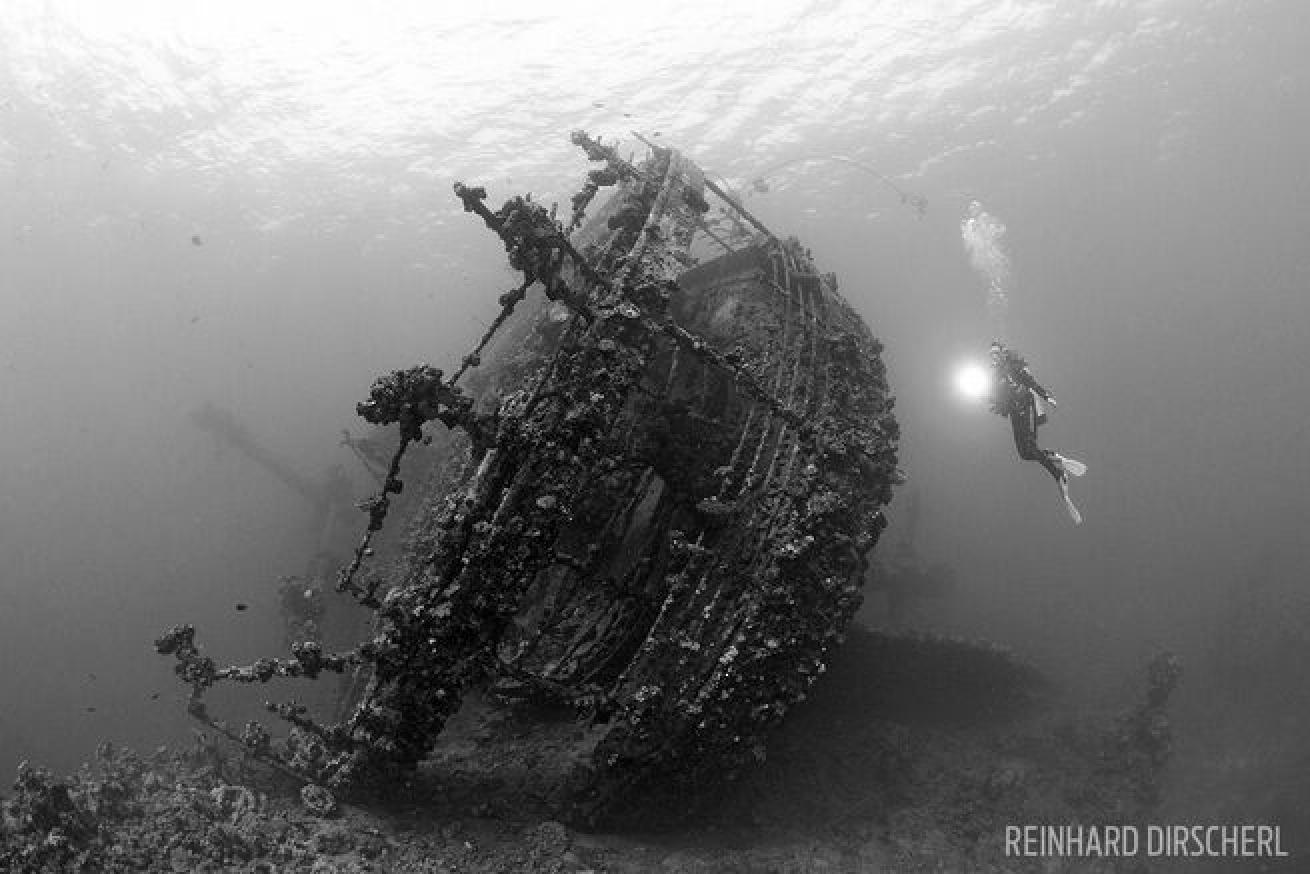
Reinhard DirscherlThe Umbria shipwreck off the coast of Sudan
Less visited than the nearby Thistlegorm but no less impressive, the Umbria shipwreck in the Red Sea off Sudan is easily among the greatest shipwrecks in the world. The German-built passenger ship was retrofitted by the Italians as a troop transport. Unlike many WWII wrecks, the Umbria was sunk intentionally by its captain at the start of the war, after the ship was boarded by the British, to prevent its cargo of supplies from falling into British hands. “It’s on its port side in 140 feet, with the starboard lifeboat davits breaking the water’s surface,” says Mark Evans, former editor of Sport Diver UK. and now editor of Scuba Diver UK. “The prime spots to visit include the holds containing 360,000-plus bombs and detonators, three Fiat 1100 Lunga cars, a veritable liquor store of wine bottles, and various other military supplies. The kitchen is complete with dough mixers and a pizza oven (it was Italian, after all). And in the immense engine room/workshop, you can still find tools sitting where they fell after it sank.”
NEED TO KNOW
Type of ship: Passenger ship turned troop transport and supply ship
Depth: 140 feet
Length: 500 feet
Dive conditions: Visibility of 100 feet or more; water temperature ranges from the mid-80s in summer to low 70s in winter
When to Go: November to June
Fast Fact: The Umbria was originally named Bahia Blanca and based in Argentina until 1935.
+ SS EMPIRE HERITAGE / MALIN HEAD

Steve JonesThe SS Empire Heritage in the North Atlantic
The North Atlantic waters off Malin Head, in the far north of Ireland, were a vital shipping lane connecting Britain and America during WWII. So it’s no wonder the seafloor here is littered with wrecks, taken down by wolf packs of Nazi U-boats. Among them is the SS Empire Heritage, one of the largest ships sunk during the war, which went down with a massive load of tanks, supplies and 112 of the 163 people on board. “Years of wave action has smashed the superstructure,” says underwater photographer Steve Jones. “Sherman tanks lie entangled with trucks across the wreck.” At 225 feet deep, the SS Empire Heritage is only for seasoned tec divers.
NEED TO KNOW
Type: British steam tanker-turned-transport ship
Depth: 225 feet
Length: 500 feet
Dive Conditions: Visibility around 100 feet, water temperature in the mid-60s during summer
When to Go: Summer, when trips are available. Check with operators well in advance.
Fast Fact: The Pinto was also sunk by U-boats while rescuing passengers from the sinking Empire Heritage.
+ USS SUSAN B. ANTHONY / NORMANDY
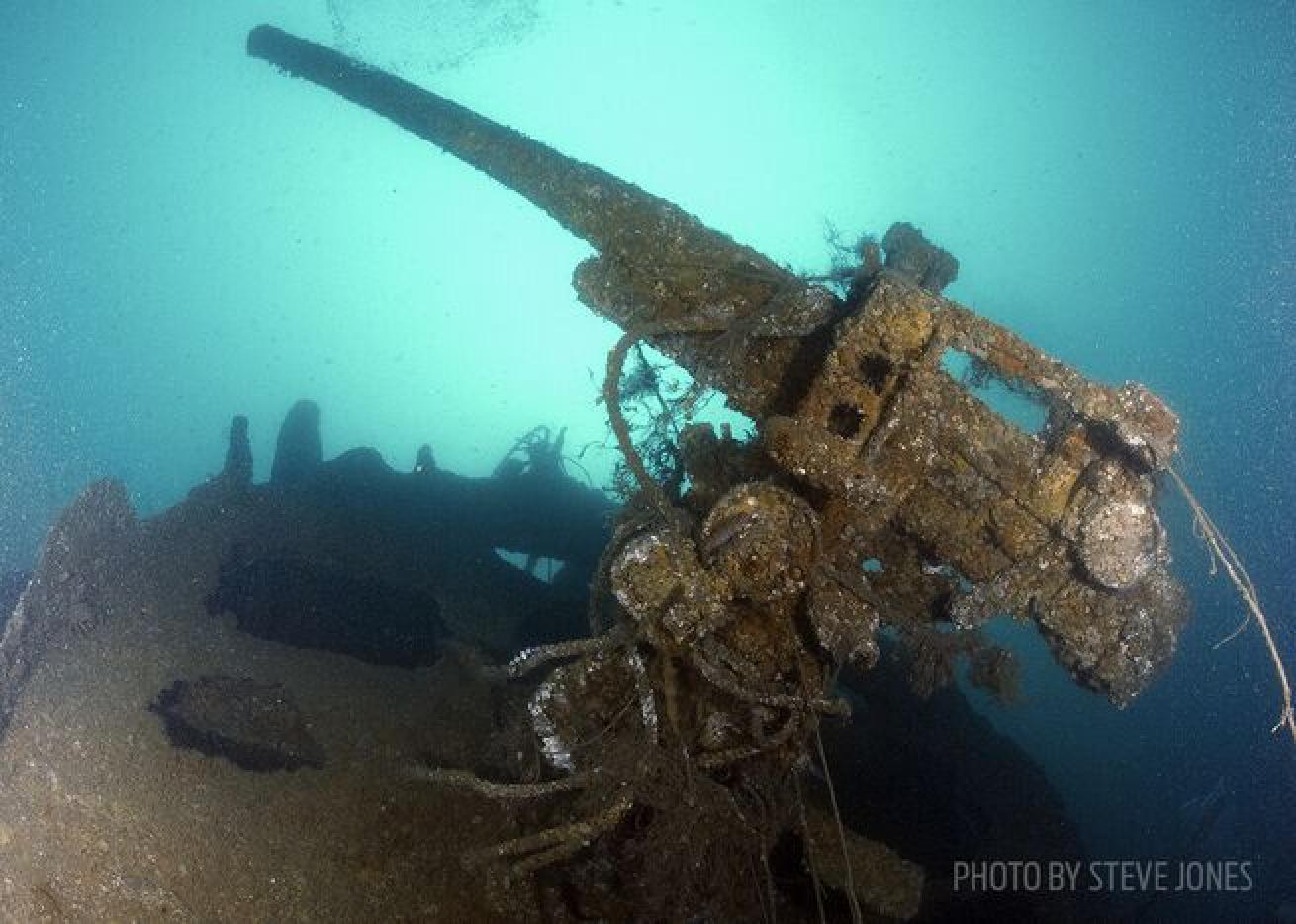
Steve JonesThe USS Susan B. Anthony off Normandy
Few scenes of WWII remain etched in our collective minds quite like D-Day, when Allied forces stormed the beaches of Normandy under heavy fire in the largest amphibious invasion in history. Some of the ships involved never left the shores of France, including the USS Susan B. Anthony. The ocean liner-turned-transport ship was carrying soldiers on the second day of the invasion when it hit a mine. All 2,689 people on board escaped, and the ship slipped beneath the waves. “Every hole seems to hold a lobster, crab or conger eel,” says underwater photographer Steve Jones. “Neither marine life nor artifacts can be taken from the wrecks, which is great for those of us who want to see the wrecks of D-Day as they were when they went down.”
+ U-352 / NORTH CAROLINA
No WWII warships inspire as much fascination as German U-boats. Wolf packs of Nazi subs dominated vital shipping lanes from the North Atlantic to the eastern seaboard. Along the North Carolina coast, U-352 is clearly recognizable with the pressure hull, torpedo tubes, propeller and diving planes all largely intact. “For the avid fan, there is no easier U-boat to dive along the eastern seaboard,” says Mike Gerken, underwater photographer and captain of the M/V Truk Odyssey. “Warm, clear water from the Gulf Stream provides consistently good conditions for divers with the qualifications to make a 110-foot dive to see this iconic piece of war history.”
+ NIPPO MARU / CHUUK LAGOON, FEDERATED STATES OF MICRONESIA
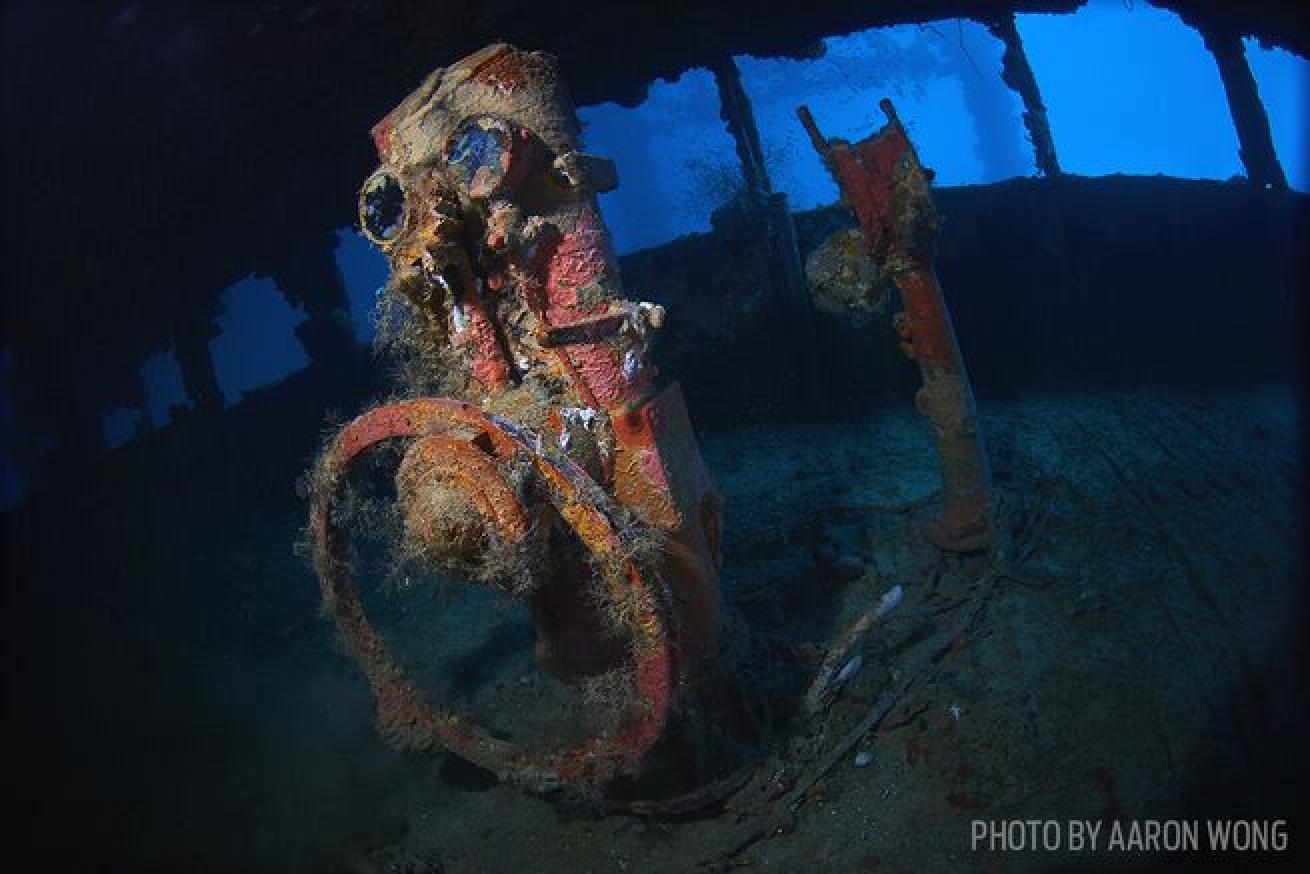
Aaron WongThe remnants of the Nippo Maru
For a haunting look at the havoc of WWII entombed underwater, few places compare to Chuuk (often called Truk) Lagoon. The remote Micronesian state of Chuuk was the site of Operation Hailstone, in which American forces delivered a decisive blow to the Japanese Imperial Fleet, sending more than 40 warships to the seafloor — still laden with guns, tanks and Japanese servicemen — creating an undersea graveyard. Nippo Maru is among the top dives in the lagoon. “One highlight is the tank sitting on the deck, on the port side next to the cargo hold,” says Cliff Horton of Odyssey Adventures, which runs the Truk Odyssey liveaboard. “The wreck is a bit deeper than many of the others but still mostly within recreational-dive limits — divers can find the highly photogenic pilothouse at 90 feet.” Inside, divers can see a wide array of artifacts, including gas masks, artillery shells and a cargo hold packed with hundreds of beer bottles. trukodyssey.com
NEED TO KNOW
Type: Water carrier and cargo ship
Depth: 90-140 feet
Length: 353 feet
Dive Conditions: Visibility averages 40 to 80 feet; water temperature 80 to 85 degrees year-round
When to Go: Year-round
Fast Fact: The Nippo Maru went under two hours after taking three direct hits.
+ OLYMPIA MARU / PHILIPPINES
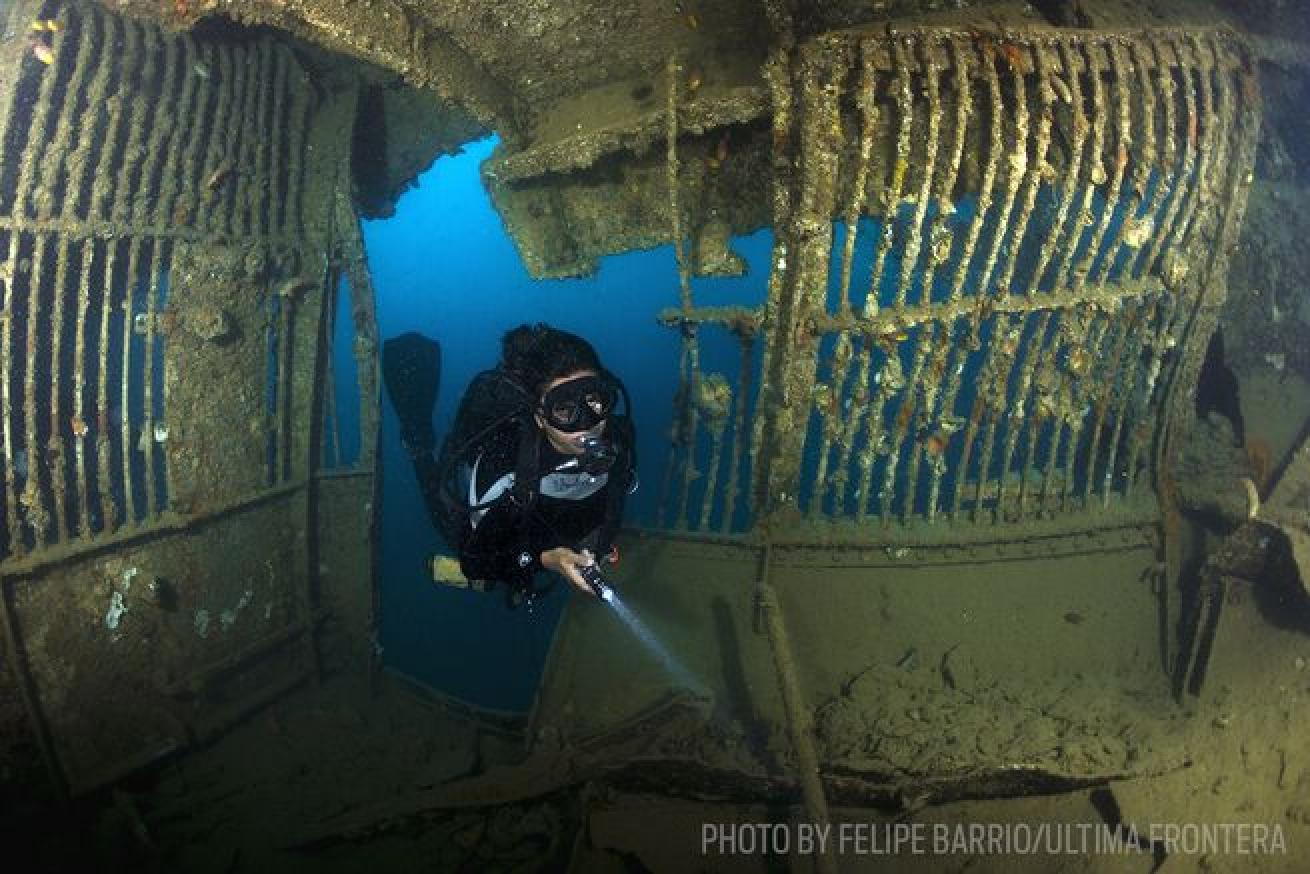
Felipe Barrio/Ultima FronteraThe Olympia Maru in the Philippines
For many years, the Olympia Maru shipwreck in the Philippines’ Coron Bay was simply called the Tangat Wreck because of its proximity to Tangat Island. The Japanese cargo ship has since been identified, and it’s among many Japanese shipwrecks scattered around the region, sunk by a fast-and-furious bombing run by American aircraft. Starting around 60 feet, Olympia Maru is one of the easiest wrecks to dive in Coron Bay, with large, open cargo holds. “The wreck hosts a plethora of corals and swarms with exotic fish life,” says Andy Davis, a technical dive instructor in the Philippines who helps with historical-wreck identification with the Philippines Underwater Archeological Society. “Qualified wreck divers can enjoy easy swim-throughs and penetrations that bring the wreck’s history to life.”
NEED TO KNOW
Type: Japanese cargo ship
Depth: 100 feet
Length: 400 feet Dive Conditions: Visibility is 40 to 50 feet; water temperature in the low 80s
When to Go: Year-round, with better visibility during the December to June dry season
Fast Fact: Ten dive bombers teamed up to sink the Olympia Maru in a surprise strike by Allied forces.
+ HIROKAWA MARU / SOLOMON ISLANDS

Kevin PalmerCorals grow on the Hirokawa Maru
The crew of the Hirokawa Maru was unloading its cargo onto Guadalcanal in the early-morning hours of November 14, 1942. But the ship was spotted, along with three others, by U.S. Marines, who opened fire, sinking them all. Hirokawa Maru sank near the shore — which drops quickly into deeper water — so the shallow parts of the wreck were salvaged over the years, but the deep sections remained intact, becoming a dazzling artificial reef covered in corals. Because of its location, the wreck offers plenty of options for divers, starting just beneath the surface and stretching to nearly 200 feet. “It’s like stepping back in time, the farther you descend on the wreck,” says Shannon Kozak, owner of Solomon Islands Dive Expeditions. “And recent earthquakes in Solomons have uncovered new areas and new pieces of equipment, so even the locals who have dived the wreck hundreds of times are seeing something new.” Much of the ship’s innards was salvaged in the decades following its sinking, but the Hirokawa Maru’s engine is still visible. And better yet, Bonegi 1, as the wreck is known locally, provides accessible penetration options for qualified divers who are looking to venture inside the ship for exploration. solomonsdiving.com
Related Reading: Embracing the Deep in Chuuk Lagoon
NEED TO KNOW
Type of ship: Japanese cargo ship
Depth: 10-200 feet
Length: 475 feet
Dive conditions: Visibility is 30 to 50 feet; water temperature in the low 80s year-round
When to Go: Year-round
Fast Fact: Because of the ship’s proximity to shore, the Hirokawa Maru’s crew was able to escape as it was left burning and sinking.


